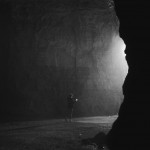PhotoNOLA: Rich Frishman: Ghosts of Segregation
![In the early morning of Sunday, September 15, 1963, four members of the United Klans of AmericaÑThomas Edwin Blanton Jr.,Herman Frank Cash, Robert Edward Chambliss, and Bobby Frank CherryÑplanted a minimum of 15 sticks of dynamite with a time delay under the steps of the 16th Street Baptist Church in Birmingham, Alabama, close to the basement. At approximately 10:22 a.m., an anonymous man phoned the 16th Street Baptist Church. The call was answered by the acting Sunday School secretary: a 14-year-old girl named Carolyn Maull. To Maull, the anonymous caller simply said the words, "Three minutes", before terminating the call. Less than one minute later, the bomb exploded as five children were present within the basement assembly, changing into their choir robes in preparation for a sermon entitled "A Love That Forgives". According to one survivor, the explosion shook the entire building and propelled the girls' bodies through the air "like rag dolls". The explosion blew a hole measuring seven feet in diameter in the church's rear wall, and a crater five feet wide and two feet deep in the ladies' basement lounge, destroying the rear steps to the church and blowing one passing motorist out of his car. Several other cars parked near the site of the blast were destroyed, and windows of properties located more than two blocks from the church were also damaged. All but one of the church's stained-glass windows were destroyed in the explosion. The sole stained-glass window largely undamaged in the explosion depicted Christ leading a group of young children. Hundreds of individuals, some of them lightly wounded, converged on the church to search the debris for survivors as police erected barricades around the church and several outraged men scuffled with police. An estimated 2,000 black people, many of them hysterical, converged on the scene in the hours following the explosion as the church's pastor, the Reverend John Cross Jr., attempted to placate the crowd by loudly reciting the 23rd Psalm through a bullhorn. One individual who converged on the scene to help search for survivors, Charles Vann, later recollected that he had observed a solitary white man whom he recognized as Robert Edward Chambliss (a known member of the Ku Klux Klan) standing alone and motionless at a barricade. According to Vann's later testimony, Chambliss was standing "looking down toward the church, like a firebug watching his fire". Four girls, Addie Mae Collins (age 14, born April 18, 1949), Carol Denise McNair (age 11, born November 17, 1951), Carole Robertson (age 14, born April 24, 1949), and Cynthia Wesley (age 14, born April 30, 1949), were killed in the attack. The explosion was so intense that one of the girls' bodies was decapitated and so badly mutilated in the explosion that her body could only be identified through her clothing and a ring, whereas another victim had been killed by a piece of mortar embedded in her skull. The then-pastor of the church, the Reverend John Cross, would recollect in 2001 that the girls' bodies were found "stacked on top of each other, clung together". All four girls were pronounced dead on arrival at the Hillman Emergency Clinic. More than 20 additional people were injured in the explosion, one of whom was Addie Mae's younger sister, 12-year-old Sarah Collins, who had 21 pieces of glass embedded in her face and was blinded in one eye. In her later recollections of the bombing, Collins would recall that in the moments immediately before the explosion, she had observed her sister, Addie, tying her dress sash.[33] Another sister of Addie Mae Collins, 16-year-old Junie Collins, would later recall that shortly before the explosion, she had been sitting in the basement of the church reading the Bible and had observed Addie Mae Collins tying the dress sash of Carol Denise McNair before she had herself returned upstairs to the ground floor of the church.](http://lenscratch.com/wp-content/uploads/2019/02/001-16th-Street-Baptist-Church-Easter-v2-14x14.jpg)
©Rich Frishman, 16th Street Baptist Church; Birmingham, Alabama 2018 On September 15, 1963, the congregation of the 16th Street Baptist Church in Birmingham, Alabama greeted each other before the start of Sunday service. In the basement of the church, five young girls, two of them sisters, gathered in the ladies room in their best dresses, happily chatting about the first days of the new school year. It was Youth Day and excitement filled the air, they were going to take part in the Sunday adult service. Just before 11 o’clock, instead of rising to begin prayers the congregation was knocked to the ground. As a bomb exploded under the steps of the church, they sought safety under the pews and shielded each other from falling debris. In the basement, four little girls, 14-year-olds Addie Mae Collins, Denise McNair, Carole Robertson, and 11-year-old Cynthia Wesley, were killed. Addie’s sister Susan survived, but was permanently blinded.
I had the pleasure of meeting Rich Frishman at Fotofest last March; I not only enjoyed my time with the photographer, but immediately recognized his commitment to his craft. I featured his project American Splendor this past June, showcasing photographs that are constructed of between dozens and hundreds of images. I met up with Rich again at PhotoNOLA in December and was presented with a poignant and powerful new body of work, Ghosts of Segregation. I’m happy to share that this project went on to win the 2018 PhotoNOLA Review Award which results in a solo exhibition at the New Orleans Photo Alliance Gallery during the thirteenth annual PhotoNOLA festival in December, a cash award of $1000, and a complimentary year of mentoring and strategic marketing consultations from Mary Virginia Swanson.
In addition to Rich’s PhotoNOLA nod, the New Orleans Museum of Art will be exhibiting two large-scale prints from the Ghosts of Segregation project as part of the “You Are Here” show, which opens April 24, 2019 and runs until July 28, 2019. He will be speaking at the NOMA the end of May, 2019.
Ghosts of Segregation puts a spotlight on the wounds of racism, segregation, and oppression that are in the shadows of places we continue to frequent, places and land that have histories that are important to acknowledge so we can learn from our unfortunate past.
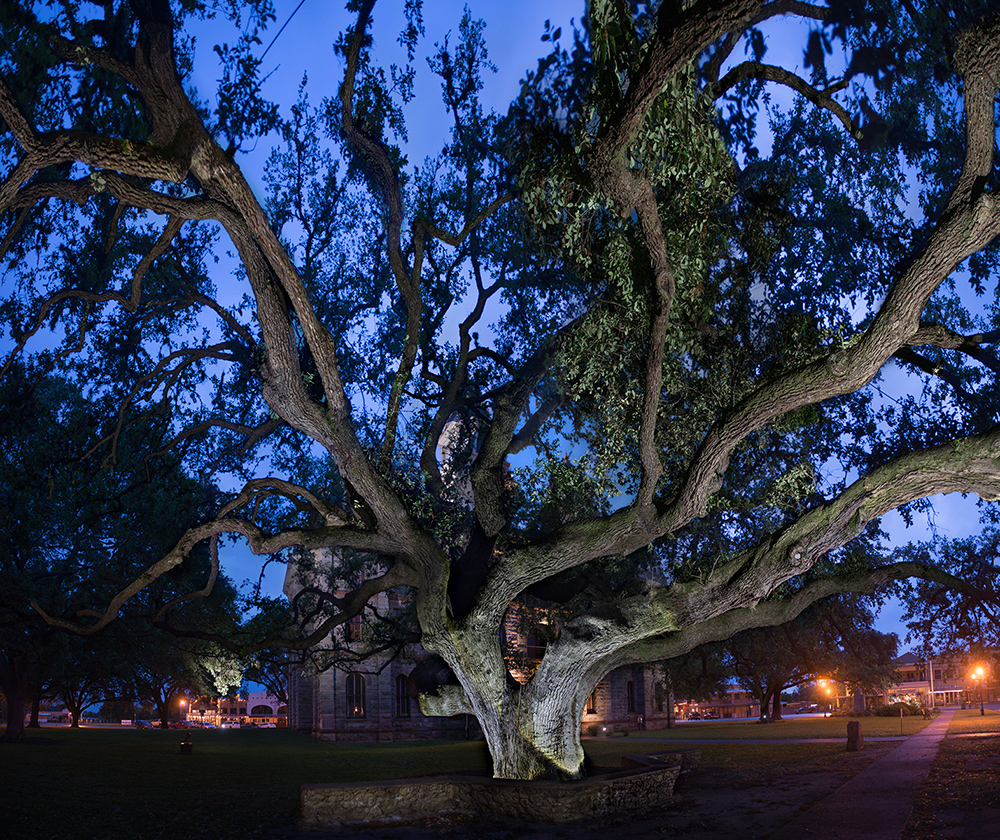
©Rich Frishman, Hanging Tree; Goliad, Texas 2018 The Goliad Hanging Tree is a symbol of justice, Texas-style. For 24 years the court trials of Goliad County were held under this big oak tree. Death sentences were carried out promptly, usually within a few minutes, courtesy of the tree’s many handy noose-worthy branches. The tree also served as a gallows for approximately 75 lynchings, many during the 1857 “Cart War” between Texans and Mexicans. No tally was kept for how many men died in The Hanging Tree, but some estimates range into the low hundreds.
Rich Frishman’s photography is included in a wide range of private and institutional collections, including the New Orleans Museum of Art, Museum of Fine Arts Houston, the Smithsonian Institution and the Amon Carter Museum. His work has garnered dozens of prestigious awards, including the PhotoNOLA Review Prize (2019), two Sony World Photography Awards (2018), Communication Arts Photography Award (2018), Photo District News Photo Annual (2018), Michael H. Kellicutt Award (2013), International Photo Annual Award (2013), and Critical Mass finalist (2012, 2015). He was nominated for a Pulitzer Prize in 1983. Gallery shows include Clark Gallery (Boston USA), Berlanga Fine Arts (Chicago USA), Minneapolis Photo Center (Minneapolis USA), and Sol Mednick Gallery (Philadelphia USA).
Born and raised in Chicago, Frishman began making photographs at age 5, when he was given a Kodak Brownie for his birthday. That simple gift sparked a lifetime passion. Photography became a language with which to explore and explain life.
Frishman specializes in magnificently detailed immersive large-format prints, constructed of hundreds of individual photographs that he meticulously blends together to create a single image. His current project, “American Splendor,” explores the cultural landscape of the United States. These authentic scenes reflect Frishman’s background in photojournalism and his interest in history. Often there is a measure of irony, humor, or pathos in his choice of subject matter, but he primarily considers himself a visual archaeologist, documenting the future remains of a lost civilization.
Frishman lives with his family on an island outside Seattle, Washington.
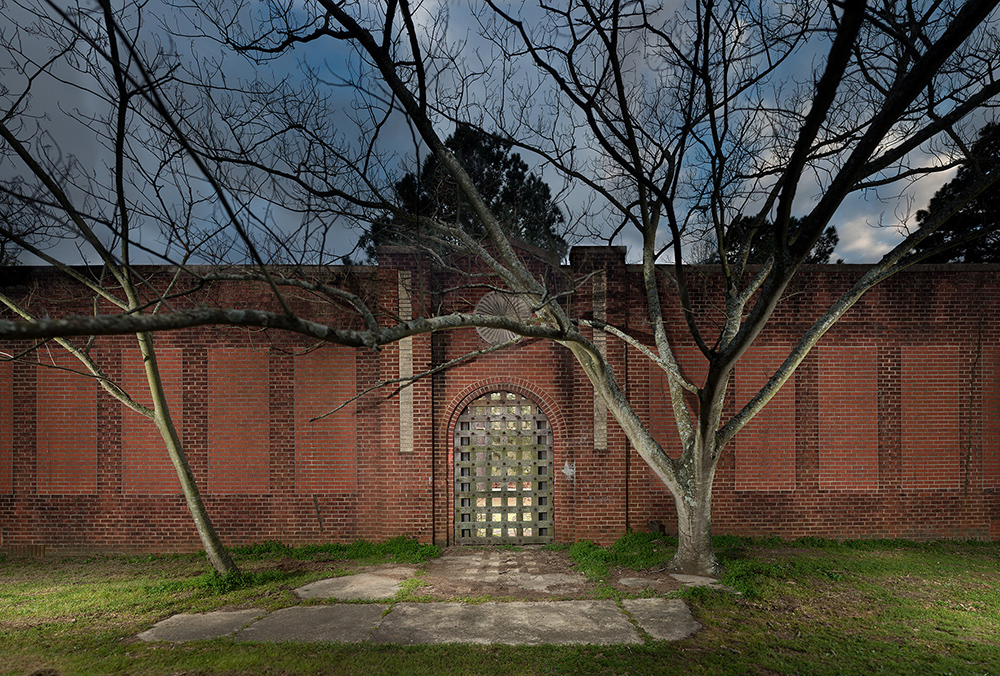
©Rich Frishman, Shiloh Rosenwald School; White Oaks, Texas 2018 The newly freed African Americans of Shiloh established a school for their children shortly after the Civil War. With financial assistance from the Julius Rosenwald Fund, a new two-room school was erected in 1920. It was replaced by a large brick building in the 1930’s. The High School was closed in 1949; the end of segregation closed the rest of the Shiloh School in 1966. All that remains is the brick front wall. The Rosenwald Fund was established in 1917 by Julius Rosenwald for “the well-being of mankind.” Rosenwald was president and chairman of Sears, Roebuck and Company. He became interested in social issues, especially education for African Americans in the rural South, which was segregated and chronically underfunded. He provided funding to build hundreds of rural schools for black children, primarily in the South.These schools became known as Rosenwald Schools. Few remain.
Ghosts of Segregation
All human landscape has cultural meaning. Because we rarely consider our constructions as evidence of our priorities, beliefs and desires, the testimony our landscape tells is perhaps more honest than anything we might intentionally present. Our built environment is society’s autobiography writ large.
Ghosts of Segregation photographically explores the vestiges of America’s racism as seen in the vernacular landscape: Schools for “colored” children, theatre entrances and restrooms for “colored people,” lynching sites, juke joints, jails, hotels and bus stations. What is past is prologue.
We often take our daily environments for granted, but within even the most mundane edifice may lurk an important bit of history. If we are curious and diligent, we can read our surroundings like a book. That stairway apparently to nowhere once went somewhere. The curious palimpsest of bricks covers something. What purpose did they serve?
Segregation is as much current events as it is history. These ghosts haunt us because they are very much alive. – Rich Frishman

©Rich Frishman, Border Wall; Brownsville, Texas 2018 The United States government has recently begun fortifying the border between the US and Mexico. This new gate actually separates American farmers from their croplands just to the south, still in the United States. Nearby, in a former Walmart store, nearly 1500 immigrant children separated from their parents are incarcerated (as of July 2018.)
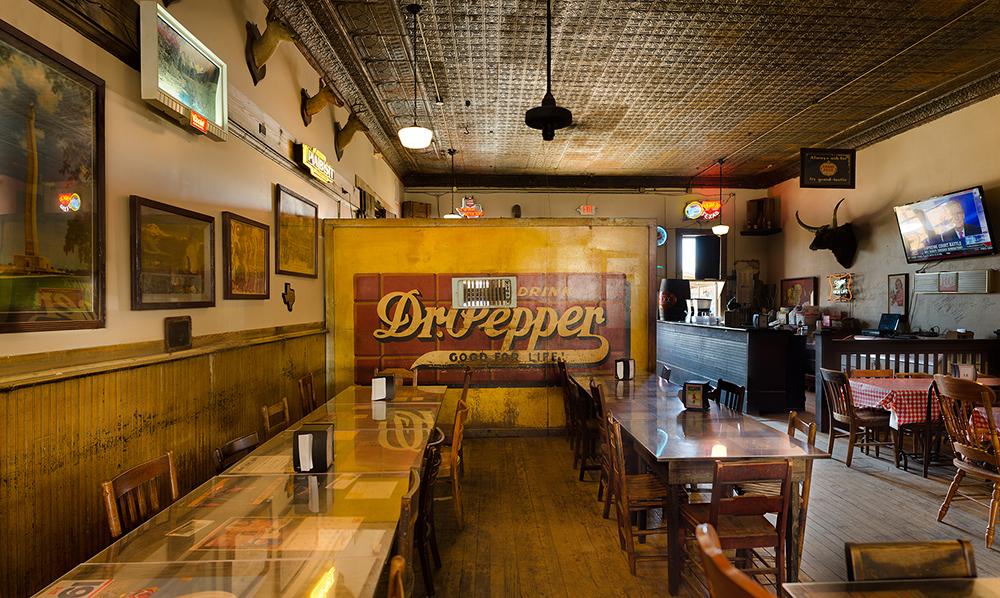
©Rich Frishman, Segregation Wall; Gonzales, Texas 2016 The wall was constructed in the early 20th Century and is decorated with an original pre-1929 Dr. Pepper logo. At the time of its construction (circa 1906) only Caucasian customers were allowed to sit in the front of the saloon. All Hispanic, Asian and African-American customers had to sit behind the wall. When the saloon was remodeled and re-opened in 2014 the wall, no longer used for its original purpose, was retained as a historical reminder.

©Rich Frishman, Colored Entrance at Texan Theatre; Kilgore, Texas 2018 The enigmatic door atop the stairway on the south side of the Texan Theatre, long locked and largely overlooked, is the “Colored entrance,” a vestige of Jim Crow-era segregation. In Kilgore, Texas, the term “colored” extended to anyone not Caucasian, including Hispanics and the occasional Asian.
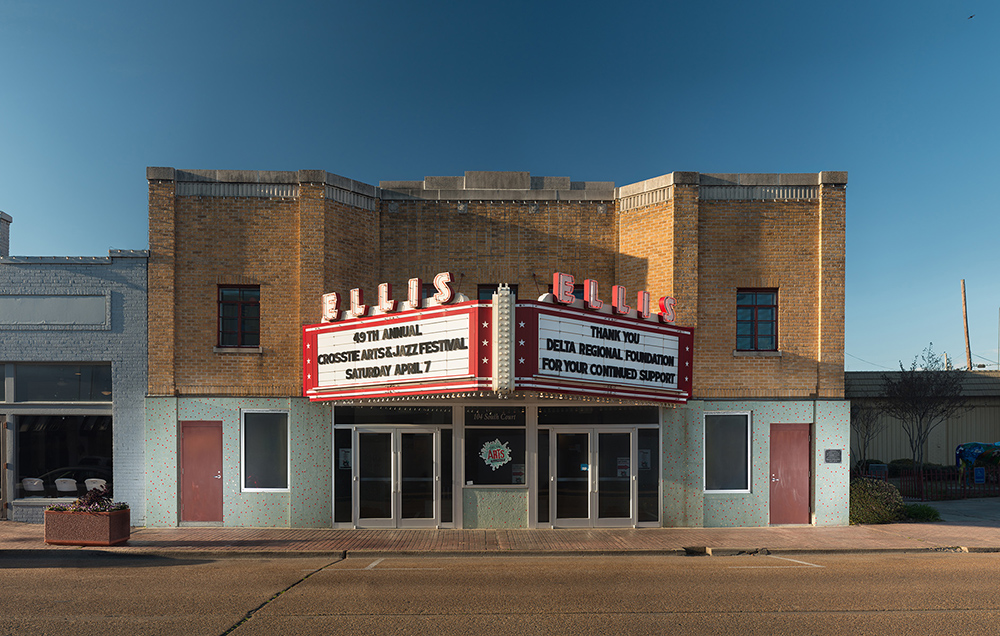
©Rich Frishman, Ellis Theatre; Cleveland, Mississippi 2018 On the left is the Ellis Theatre’s entrance for “colored people.” On the right is the colored restroom entrance. Buddy Jennings writes: “The one thing that sticks out most in my mind about the Ellis is the Saturday June Smith (a black friend of mine who also lived on Kennedy’s farm) and I walked all the way there to see a Tarzan movie and they would not let us sit together. June had to sit up in the balcony and they would not let me sit up there with him. The movie cost me a quarter and cost June fifteen cents. We were only nine or ten years old at the time and had our parents’ permission to walk all the way to Cleveland and back, even though it would be close to midnight before we were back home.”
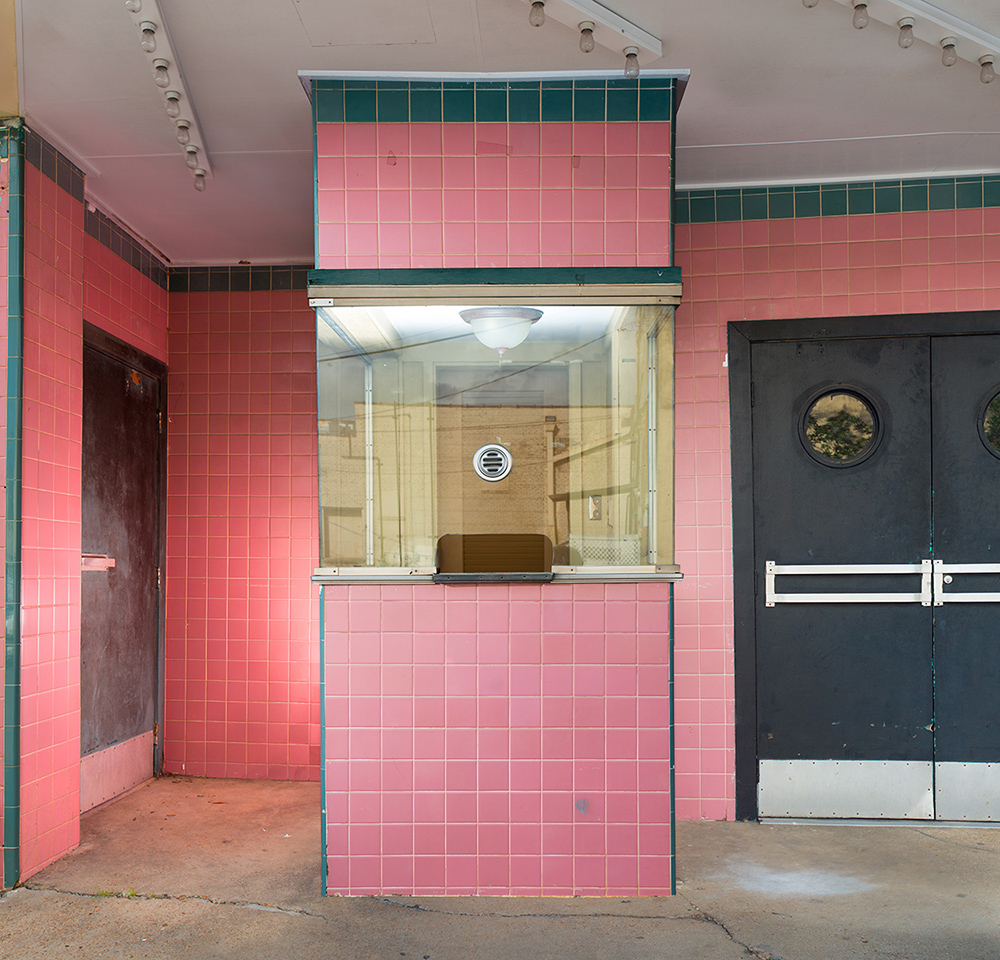
©Rich Frishman, Colored Entrance; Philadelphia, Mississippi 2018 The “Colored Entrance” at the Ellis Theatre in Philadelphia, Mississippi is tucked to the left of the ticket booth. It led directly up stairway to the segregated section of the balcony.
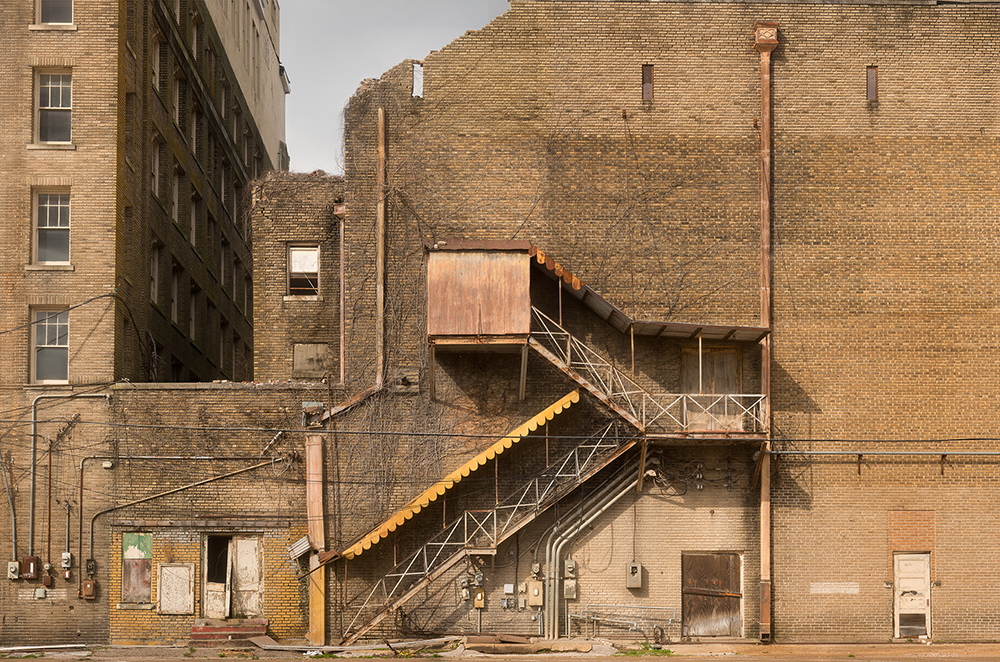
©Rich Frishman, Colored Entrance to Paramount Theatre; Clarksdale, Mississippi 2018 The Paramount Theatre, which opened as the Marion Theatre in 1918, was once a grand pleasure palace, one of the first purpose-built movie theatres in Mississippi. While white theatre goers entered under neon lights on Yazoo Street, Colored people had to purchase their tickets in the alley around back and trudge up these stairs to the segregated sections of the upper and lower balcony.
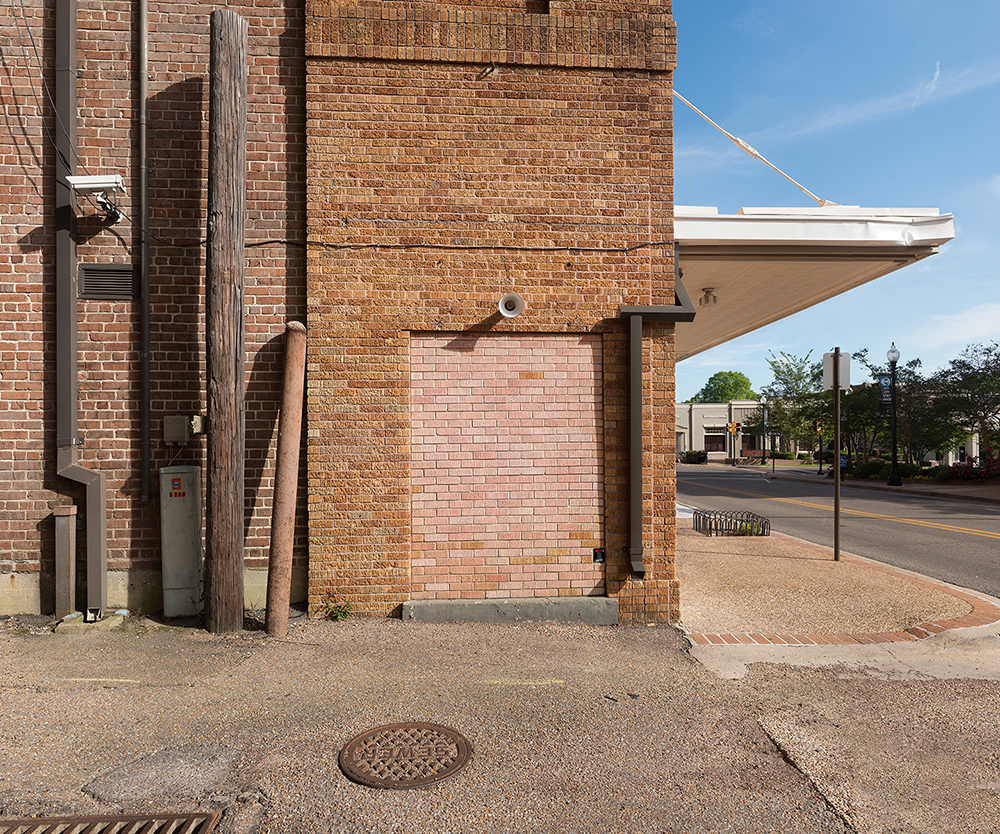
©Rich Frishman, Vestige of Colored Entrance; Saenger Theatre; Hattiesburg, Mississippi 2018 Years after the end of Jim Crow segregation, many architectural vestiges remain. This curious palimpsest of bricks covers the entrance for “Colored People” at the Saenger Theatre, a once-grand movie house in Hattiesburg, Mississippi. Often these entrances were down an alley away from the glittering lights of the main entrance. Usually they led directly to a set of stairs ascending to a segregated portion of the balcony.
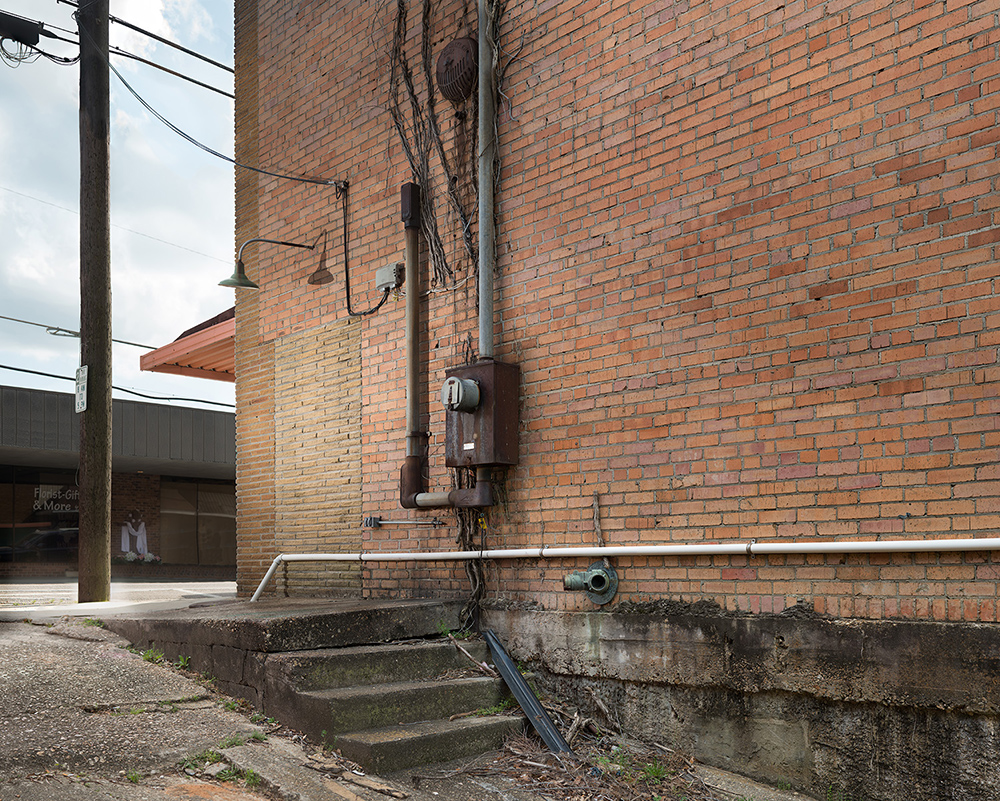
©Rich Frishman, Colored Entrance; Tylertown, Mississippi 2018 A scar over a deep wound, bricks cover the “colored entrance” to a movie theatre in Tylertown, Mississippi. Such palimpsests abound throughout the South, obcsure reminders of Jim Crow-era segregation. Often situated in an alley, these entrances led to a segregated section of the balcony. While Whites sat in upholstered seats, Blacks frequently were relegated to wooden backless benches or rickety wooden seats.
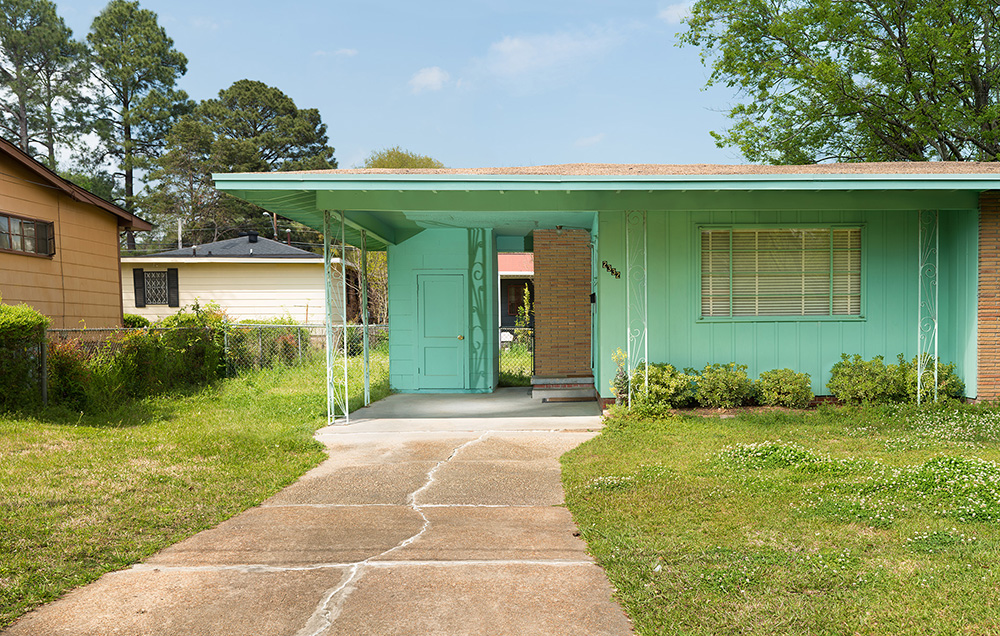
©Rich Frishman, Medgar Evers’ House; Jackson, Mississippi 2018 Shortly after midnight on June 12, 1963, Medgar Evers, the first Mississippi state field secretary for the National Association for the Advancement of Colored People pulled into the driveway of his humble home in Jackson. He had been at an integration meeting, watching President John F. Kennedy’s speech on national television in support of civil rights. Emerging from his car carrying T-shirts that stated, “Jim Crow Must Go”, Evers was struck in the back with a bullet that ricocheted into his home. He staggered 30 feet before collapsing, dying at the local hospital 50 minutes later. Less than 24 hours earlier George Wallace had dramatically stood in a doorway at the University of Alabama’s Foster Auditorium, physically blocking the entrance of the first 2 African American students enrolled at the university. During World War II, Evers volunteered for the U.S. Army and participated in the Normandy invasion. In 1952, he joined the National Association for the Advancement of Colored People (NAACP). As a field worker for the NAACP, Evers traveled through his home state encouraging poor African Americans to register to vote and recruiting them into the civil rights movement. He was instrumental in getting witnesses and evidence for the Emmitt Till murder case, which brought national attention to the plight of African Americans in the South.
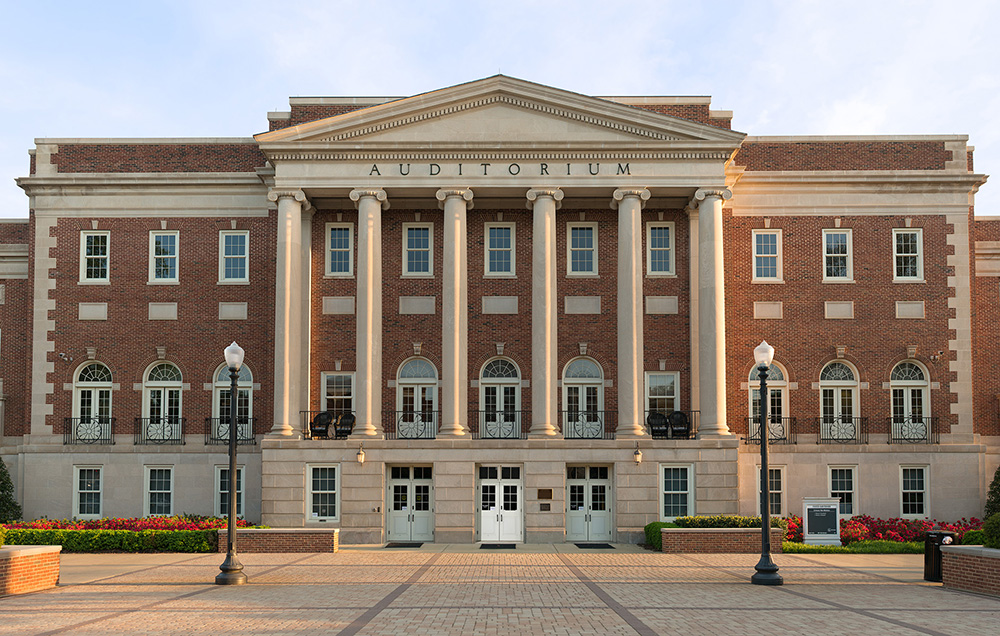
©Rich Frishman, University of Alabama Foster Auditorium; Tuscaloosa, Alabama 2018 Foster Auditorium, on the campus of the University of Alabama in Tuscaloosa, Alabama. It was at the doors at the center that George Wallace, the governor of the state, stood to ceremonially block the entrance of African American students who were about to integrate the public university. This incident has become known as “The Stand in the Schoolhouse Door.” That night Medgar Evers, the first Mississippi state field secretary for the NAACP, was murdered in nearby Jackson Mississippi by Byron De La Beckwith, a fertilizer salesman and member of the White Citizens’ Council and Ku Klux Klan.
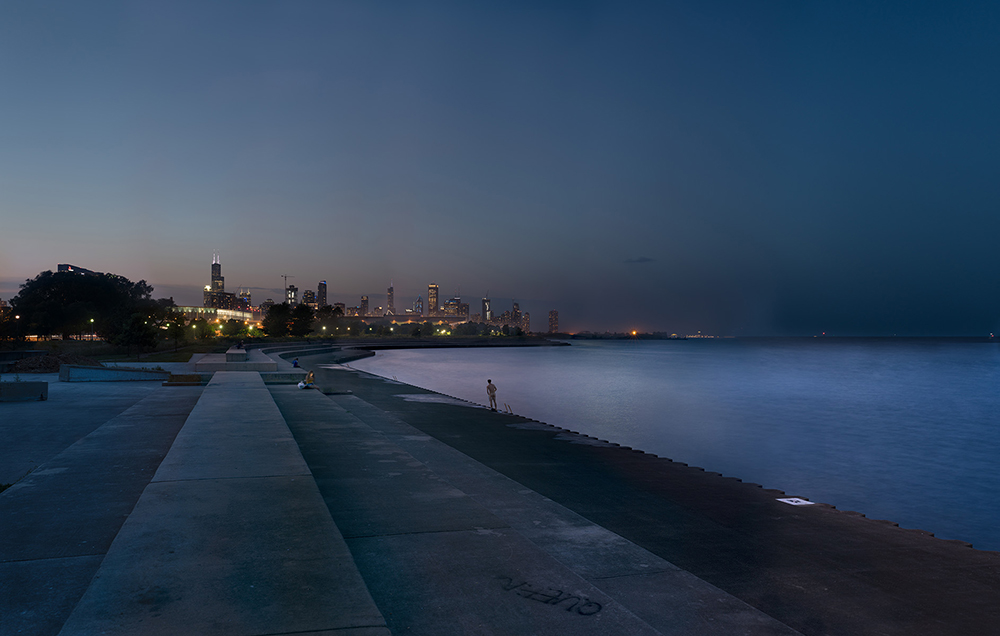
©Rich Frishman, On July 27, 1919 when large crowds of white and black patrons went to the Lake Michigan beach in Chicago, Illinois to seek relief from the 96° heat, an angry dispute erupted over the stoning of Eugene Williams, a 17-year old African American swimmer who inadvertently crossed a segregated boundary into the “white” swimming area. “One Negro was knocked off a raft at the 29th Street beach after he had been stoned by whites. He drowned because whites are said to have frustrated attempts of colored bathers to rescue him,” the Chicago Tribune. The situation worsened after a white police officer, Dan Callahan, refused to intervene or arrest the rock throwers, the Tribune reported. Indignant black residents then started fighting back. “The rioting spread through the black belt and by midnight had thrown the entire South Side into a state of turmoil.” By the time the riots were quelled five days later, 38 people had been killed and over 500 injured. About a thousand people, mostly African-Americans, were left homeless.
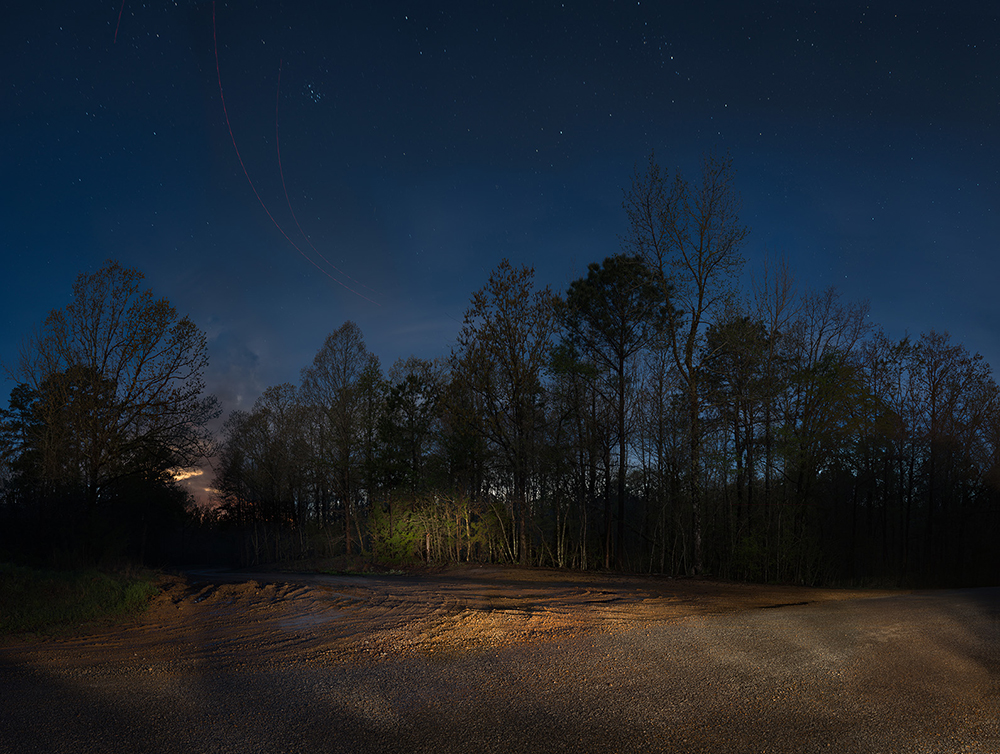
©Rich Frishman, Murder Site of James Chaney, Andrew Goodman and Mickey Schwerner; Neshoba County, Mississippi 2018 During the Freedom Summer of 1964 three civil rights activists were jailed briefly in the small Neshoba County jail on trumped up charges. When Mickey Schwerner, Andrew Goodman and James Chaney were released that night, they were followed by Ku Klux Klan members tipped off by the sheriff’s office. They were forced off the road en route to their office in Meridian, taken to this remote backroads location and bludgeoned to death. Their bodies were later found in an earthen dam.
Posts on Lenscratch may not be reproduced without the permission of the Lenscratch staff and the photographer.
Recommended
-
The International Women in Photo Association Awards: Lorraine Turci: The Resilience of the CrowMarch 16th, 2024
-
The International Women in Photo Awards: Natalia Garbu: Moldova LookbookMarch 15th, 2024
-
The International Women in Photo Association Awards: Rayito Flores Pelcastre: Chirping of CricketsMarch 14th, 2024
-
The International Women in Photo Association Awards: Alena Grom: Stolen SpringMarch 13th, 2024
-
The International Women in Photo Association Awards: Louise Amelie: What Does Migration Mean for those who Stay BehindMarch 12th, 2024




























